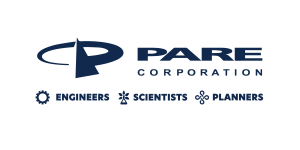Resource
Flowing Artesian Conditions at Dams - Is It the Dam's Fault?
Abstract Only - Selection of dam sites is biased towards narrow river valley sections that minimize the volume of the dam and maximize the amount of water retained by the dam. These locations are also areas that may have natural artesian groundwater conditions under pre- construction conditions. Construction of a dam often increases the artesian pressures and may lead to artesian conditions where groundwater has the potential to flow at ground surface. Artesian conditions may lead to boils, piping and/or heaving and thus may raise concerns about the safety of the dam.
Two dams built in the 1920s and early 1930s in Michigan serve as prime examples of flowing artesian conditions. Both dams had pre-construction artesian pressures as a result of infiltration of precipitation on uplands, recharge of confined aquifers, and groundwater flow towards the river valleys. Confining beds in the river valleys at the sites had both natural and man-made breaches, resulting in flowing artesian conditions. Pressures in the confined aquifers at both sites rose after construction of the dam and filling of the reservoirs.
Evaluations at the dams have included assessments of subsurface geology, piezometric heads in each identified aquifer, the need for pressure relief, and the design of pressure relief systems, where needed. The most critical aspect of artesian evaluations is an understanding of the subsurface geology and stratigraphy. In many cases, the knowledge of the underlying geologic conditions and history of piezometric levels can effectively be used to explain observed conditions, often eliminating the need for expensive remedial measures.
Case histories of investigations at the dams will be presented and will include:
-Techniques for drilling, sampling, and installation of piezometers and relief wells in high artesian pressure aquifers;
-Geologic conditions that lead to artesian conditions under natural and post-construction settings;
-Data collection and database management to maximize the utility of the data and minimize data entry and manipulation time;
-Design of pressure relief systems and incorporation of geologic uncertainties in design; and
-Maintenance and monitoring of pressure relief wells.
































